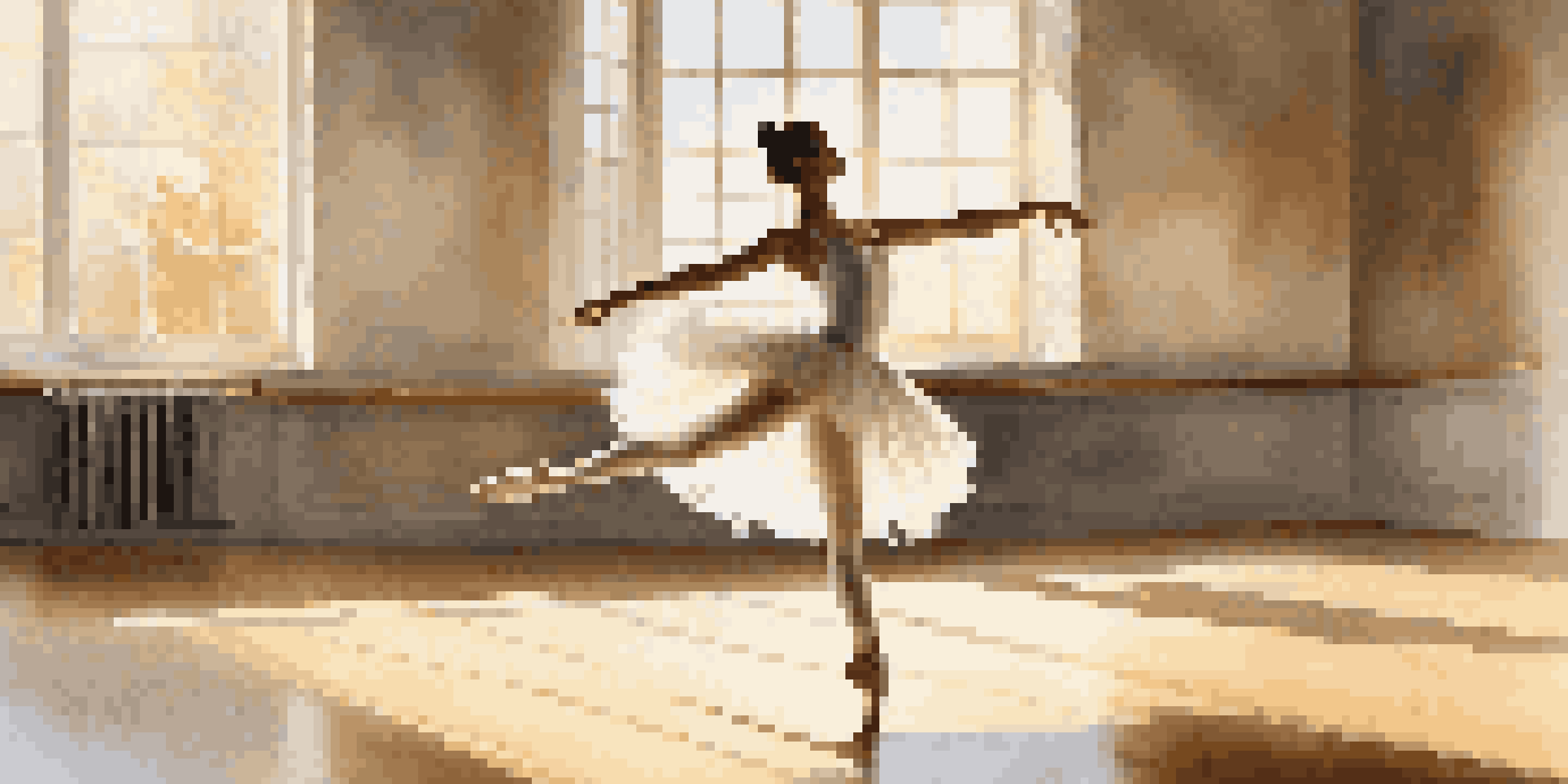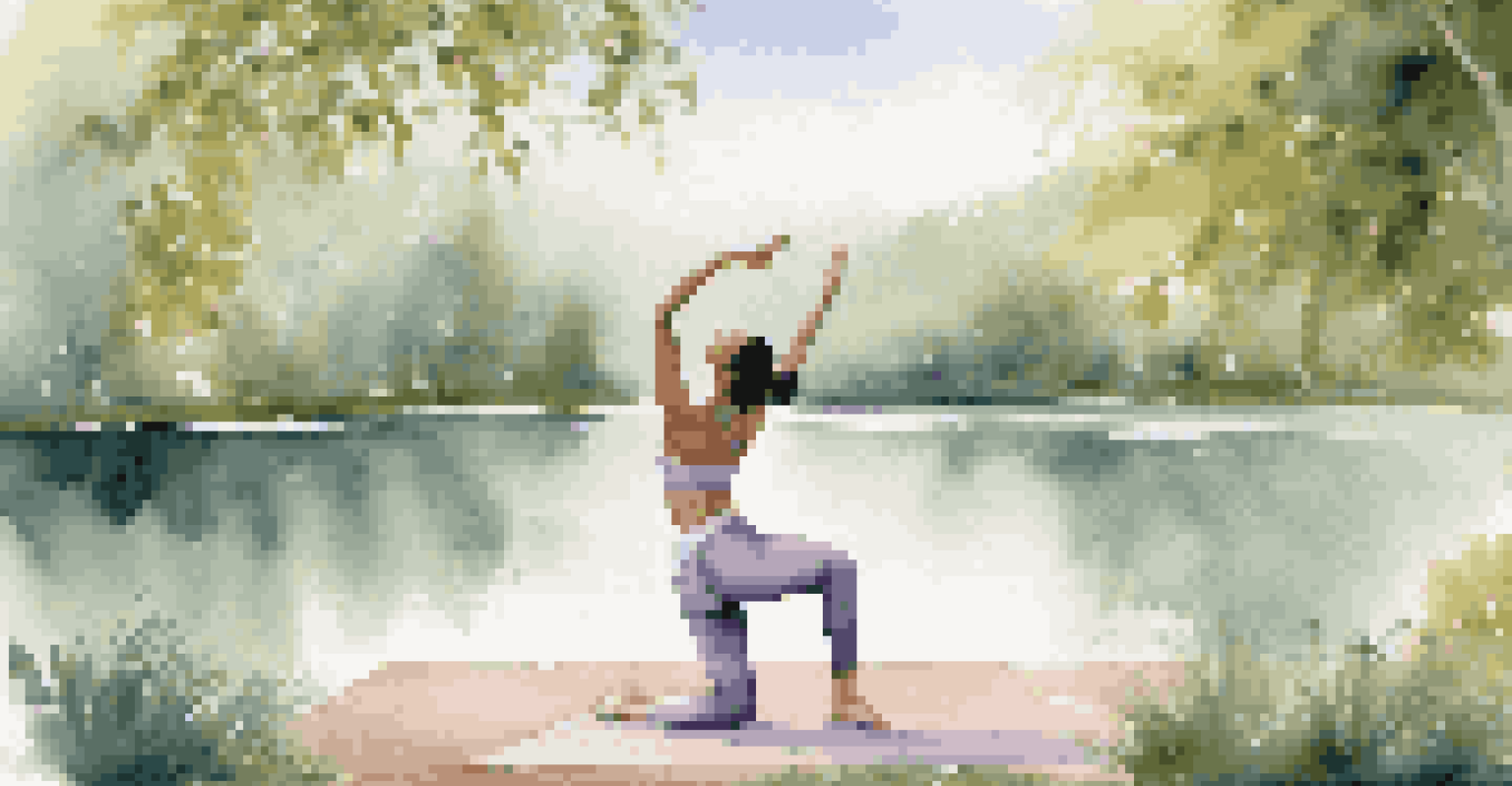The Importance of Flexibility in Dance Technique Performance

Understanding Flexibility in Dance Technique
Flexibility in dance refers to the range of motion available at a joint. It plays a crucial role in a dancer's ability to execute movements with grace and precision. Essentially, greater flexibility allows dancers to perform more complex movements that require a wider range of motion.
Flexibility is not just about being able to stretch; it involves strength and control.
When dancers possess good flexibility, they can achieve higher leg extensions, deeper pliés, and more impressive turns. This not only enhances their overall performance but also contributes to a more visually appealing aesthetic. Think of flexibility as the oil that keeps the gears of a dancer's body running smoothly.
Moreover, flexibility is not just about being able to stretch; it involves strength and control. Without proper balance and strength training, increased flexibility can lead to injuries. Therefore, understanding the nuances of flexibility is vital for every aspiring dancer.
Benefits of Flexibility in Dance Performance
One of the most significant benefits of flexibility is injury prevention. Dancers who stretch regularly and maintain flexibility are less prone to muscle strains and joint injuries. This is because flexible muscles can better absorb shocks and adapt to sudden movements, reducing the risk of overexertion.

In addition to injury prevention, flexibility contributes to improved performance quality. Dancers who can easily access their full range of motion can execute movements more fluidly and with greater expression. For instance, a flexible dancer can transition seamlessly between poses, creating a captivating visual narrative.
Flexibility Enhances Dance Performance
Good flexibility allows dancers to execute movements with greater grace, improving both performance quality and aesthetic appeal.
Furthermore, flexibility can enhance a dancer's artistic expression. With greater mobility, dancers can explore a variety of styles and interpretive movements, allowing their unique personalities to shine through. This not only enriches their performance but also connects them more deeply with their audience.
Flexibility and Technique: A Symbiotic Relationship
Flexibility and technique are intertwined in the world of dance. While flexibility allows for a greater range of motion, proper technique ensures that movements are executed safely and effectively. Dancers must learn to balance these two aspects to achieve peak performance.
The journey toward improved flexibility enhances a dancer's overall experience and performance.
Without a solid foundation in dance technique, increased flexibility can lead to poor posture, misalignment, and ultimately, injuries. For example, a dancer may be able to kick high but may not have the control to land safely. This highlights the importance of integrating flexibility training with technique practice.
To cultivate this balance, dancers should incorporate exercises that promote both flexibility and strength. This dual focus not only enhances performance but also fosters a deeper understanding of body mechanics, which is essential for any serious dancer.
Incorporating Flexibility Training into Dance Routines
Incorporating flexibility training into dance routines is essential for every dancer. Many dancers view stretching as an afterthought, but it should be a critical component of their training regimen. Setting aside dedicated time for flexibility work can yield significant benefits in overall performance.
A balanced flexibility routine can include dynamic stretches before practice and static stretches afterward. Dynamic stretches prepare the muscles for movement, while static stretches help to maintain and improve flexibility. Think of this routine as a warm-up and cool-down for your body, ensuring it’s ready to perform at its best.
Balance Flexibility with Technique
Dancers must integrate flexibility training with proper technique to avoid injuries and ensure safe execution of movements.
Additionally, incorporating yoga or Pilates into a dancer's routine can further enhance flexibility and body awareness. These practices teach control, alignment, and strength, all of which are vital for a dancer's overall technique and performance.
Common Misconceptions About Flexibility in Dance
There are several misconceptions about flexibility in dance that can hinder a dancer's progress. One common myth is that flexibility alone guarantees better performance. In reality, flexibility is just one aspect of a dancer's toolkit; technique, strength, and artistry are equally important.
Another misconception is that flexibility training should be painful. While stretching may sometimes feel uncomfortable, it should never be painful. Pain can be a sign that you’re pushing your body too hard, leading to potential injuries. It's crucial to listen to your body and stretch within a safe range.
Lastly, many dancers believe they are too old or inflexible to improve. Flexibility can be developed at any age with consistent practice and the right techniques. Embracing a growth mindset can make all the difference in a dancer's journey toward becoming more flexible.
The Role of Proper Warm-Up in Flexibility
A proper warm-up is essential for enhancing flexibility and preparing the body for dance. Warming up increases blood flow to the muscles, elevating their temperature and making them more pliable. This makes it easier to stretch and improves overall performance during practice or performances.
Warm-up routines often include light aerobic activities followed by dynamic stretches that mimic dance movements. For instance, gentle leg swings or arm circles can effectively prepare the body for the demands of dance. The goal is to engage the muscles without overstretching them before the main workout.
Commit to Long-Term Flexibility Training
Consistent practice and realistic goal-setting are essential for developing and maintaining flexibility over time.
Incorporating a thorough warm-up not only boosts flexibility but also helps prevent injuries. A well-prepared body is less likely to suffer strains or sprains, allowing dancers to focus on their technique and artistic expression without fear of injury.
Long-Term Commitment to Flexibility and Dance
Flexibility is not a one-time achievement but a long-term commitment. Dancers must integrate flexibility training into their daily routines to see continuous improvement. Regular practice fosters not only flexibility but also resilience and adaptability in dance.
Setting realistic goals can help dancers stay motivated in their flexibility journey. For example, aiming to improve a specific stretch or increase the duration of a hold can provide tangible milestones to celebrate. These small wins can keep a dancer engaged and encourage consistent practice.

Ultimately, the journey toward improved flexibility enhances a dancer's overall experience and performance. By committing to flexibility, dancers can unlock their full potential and enjoy the artistic journey that dance offers.